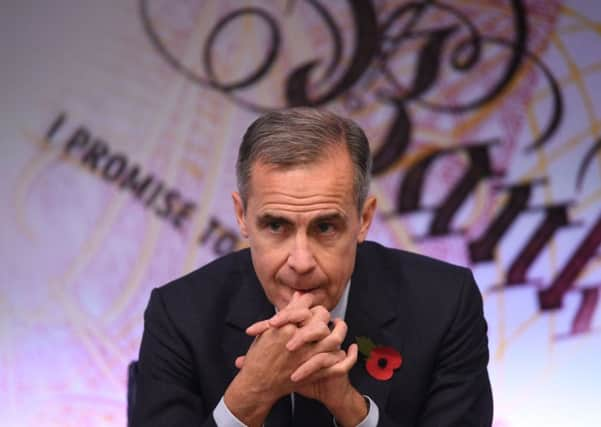Gareth Shaw: Base behaviour by banks on rate rise


I’ll return to whether the bank will actually go ahead and do this a bit later on. But before savers get excited about a boost to their returns, I want to share some findings of new research carried out by Which? that should temper their expectations.
Investigating how mortgage and savings providers reacted to the 0.25 percentage point increase in the base rate in the five weeks after the rise, Which? can reveal double standards from some banks. While lenders were generally swift to hike their mortgage rates, just one in 10 savings providers had passed on the full rate across all their instant-access accounts within five weeks.
Advertisement
Hide AdAdvertisement
Hide AdYou should probably anticipate the same, depressing behaviour will happen again.
We looked at 327 variable instant access savings accounts and Isas on 11th December, five weeks after the rate rise. Almost half (48 per cent) didn’t see any rate change at all, while just one in five (21 per cent) had passed on the full 0.25 per cent rise to customers. One in three (30 per cent) accounts saw a rate increase of less than 0.25per cent.
Not only that, 13 of the best-rate instant access accounts were withdrawn from application, and then relaunched by eight providers with either a minuscule increase, no change, or in some cases even a decreased rate.
This kind of ‘phoenixing’ is common in the savings market, where accounts with a great rate are on sale for a short period and then disappear, to be replaced by an account with a different rate. But it strikes me as an incredibly cynical move to do this just as loyal customers have a small reason to celebrate after years with their returns in the doldrums.
Of the 95 providers in the instant access savings market, we found that just one in ten (10 per cent) had applied the full 0.25 percentage point rise to all their instant-access savings accounts and Isas, while two thirds (66 per cent) hadn’t applied the full rise to any of their accounts. And one in four (23 per cent) had applied it to at least one account.
So, slow to increase savings rates – surely the banks were fair and didn’t apply a rate increase to mortgages as well? Who am I kidding?
Out of 90 mortgage lenders, 45 increased their standard variable rate – a rate set by each bank at whatever level they like, which can go up or down – by either the full 25 percentage points or 24 percentage points. That’s more than half in total.
And the fixed-rate mortgage market was hit, too. Average rates for two-year, three-year and five-year deals all increased between October and December. Five-year deals were hit hardest, with 40 per cent of providers raising their average rates for this deal type.
Advertisement
Hide AdAdvertisement
Hide AdOverall, 497 fixed-rate deals changed following November’s base rate-rise with the majority of movement coming through rate hikes (224 deals). Some 75 deals increased by more than 0.2 per cent, while 25 of these passed on the full 0.25 per cent. Worse still, 135 deals were actually withdrawn, including four out of the 10 lowest-rated two-year deals, three out of the top five lowest rate three-year deals, and one out of the 10 lowest-rate five year deals. Only 138 deals saw rate reductions in rate, around a third of all deals.
Now, on to May’s potential increase. The consumer price index, the Bank of England’s target measure of inflation, fell again in March, down to 2.5 per cent. While higher than the target, it’s a big fall from the five-year peak of 3.1 per cent in November last year.
Increasing the base rate acts as a brake on inflation. Upping the base rate is done to reduce consumer spending – people will find they get better savings rates if they put their money away, but also have to pay out more on higher interest mortgages and loans. This leaves less money left over to spend on goods and services, reducing the ‘demand-pull’ factor that can make prices go up.
So it remains to be seen whether or not the bank will act now that the picture is looking slightly rosier for consumers, especially in light of rising earnings, which went up by 2.8 per cent in the first quarter of the year.
If it does go ahead, we’re calling on banks and providers to be fair to customers across the board. It’s these kinds of double-standards that give the financial services industry such a bad reputation.
Gareth Shaw is head of Which? Money Online